To start a successful afterschool program, you first need an effective business strategy, which starts with a good business plan
A high-quality afterschool program business plan is essential. It provides a comprehensive overview of your program by running it through multiple types of analyses, approaches, and perspectives.
After all, just like any other business, an after-school program has a leadership structure, offers a service to paying customers, has competition to outperform, and a budget to adhere to.
A business plan should consider how all these factors come together to form a cohesive and effective structure.
In this article, we go over the elements comprising a typical business plan and the most optimal way to approach writing each of them.
Elements of an After-School Program Business Plan
So, which elements should you include in your after-school business plan?
Of course, there is no single definitive answer. Business plans are used by private companies and organizations alike, regardless of size, and they can be tailored to internal or external use.
However, there are still many common components most business plans will include.
These elements form the basic business strategy stress test, which will help you polish your after-school program ideas.
Executive Summary
To start, your after-school program business plan must include an executive summary.
An executive summary is to a business plan what the business plan is to the business itself—a brief and clear synopsis of the most relevant information, written to entice the reader to invest.
The main purpose of an executive summary is to grab the reader’s attention. It should be clear and concise and serve as a highlight reel of the strongest points from the remaining sections of a business plan.
It usually includes the following:
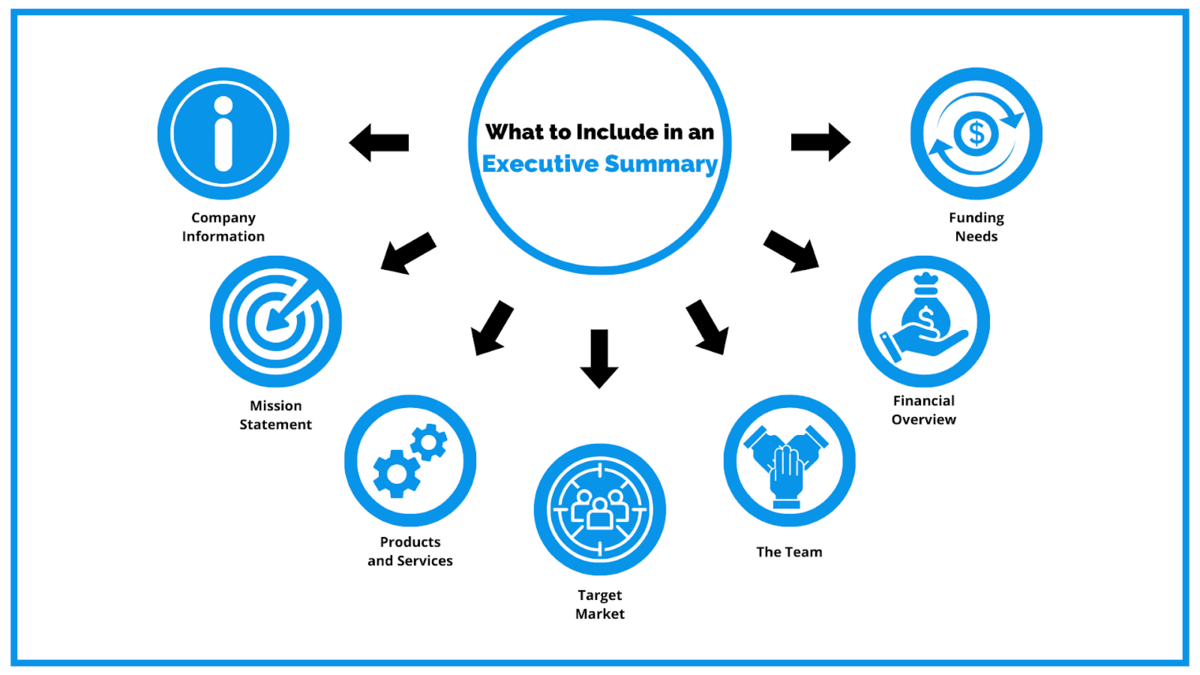
Illustration: Regpack
Because you need to flesh your ideas out before summing them up, the executive summary should be the last section you write.
However, it is the first one people will read.
Therefore, you need to make a strong first impression.
Remember, investors often have dozens of business plans to pick from. If they are not hooked by the end of the executive summary, they can easily decide to move on to the next one.
In short, the starting page of your after-school program business plan should contain an executive summary, a short and to-the-point representation of the business plan and its main ideas.
Business Description
The next element to include in your after-school program business plan is the business description.
This section should briefly convey to the reader what the program is about and what its purpose is.
For the first part, provide basic information such as the program’s name, business model, industry, key personnel, history, and planned opening date.
Next, write your program’s short-term and long-term goals.
Whether you strive for 60 sign-ups in a month or two student groups by the end of the year, it is important to choose goals that fit the acronym SMART—smart, measurable, attainable, realistic, and time-bound.
Your objectives should align with your program’s mission, vision, and value statements. These make up the essence of your program and the driving force behind it.
The mission statement has to sum up the purpose of your after-school program in one to two sentences.
Here’s a good example from Urban Youth Harp Ensemble:
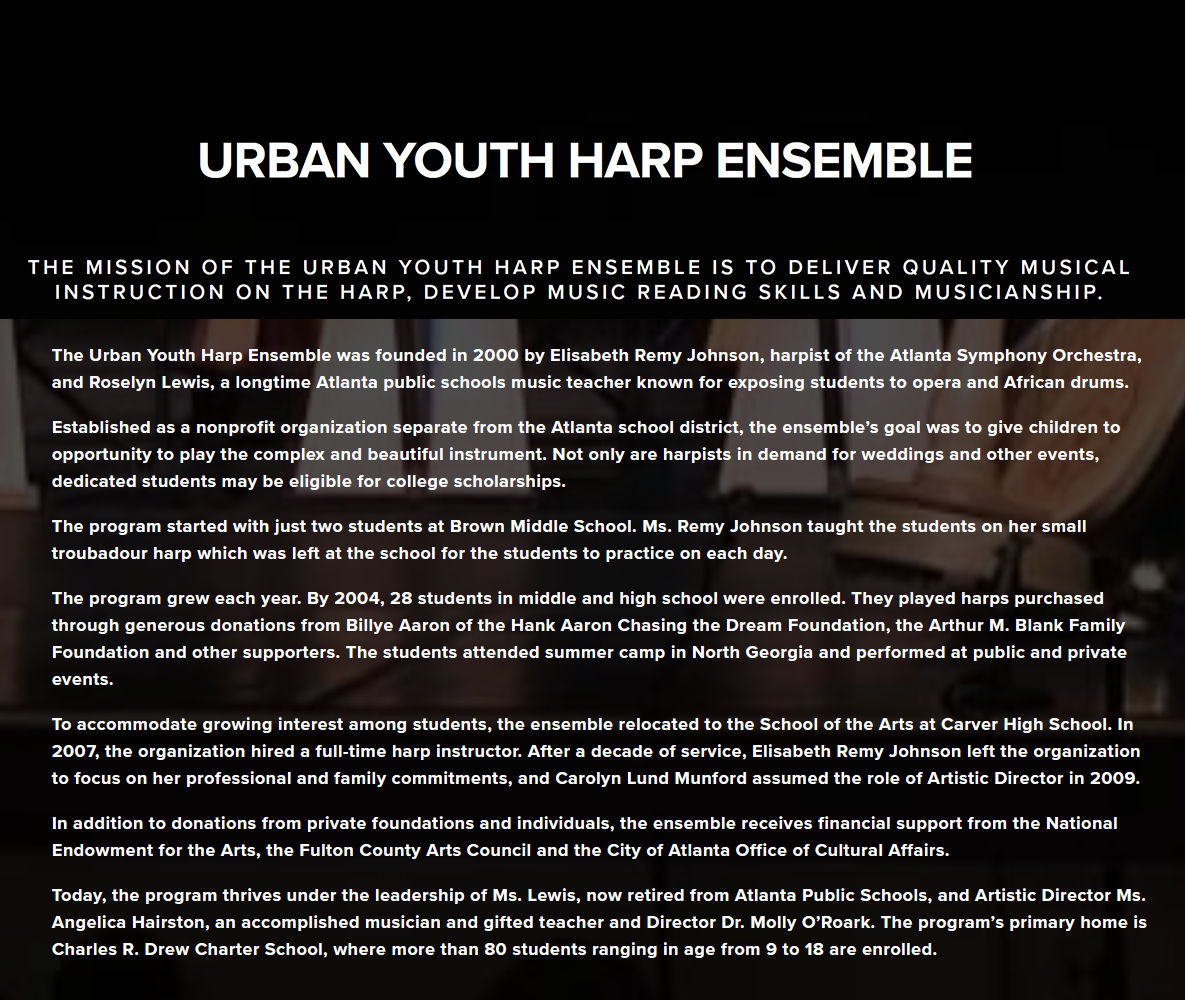
Source: Urban Youth Harp Ensemble
A business description should also include a vision statement. This is an aspirational description of the program’s desired academic enrichment in society.
In the case above, it might be: “To raise a musically literate generation.”
All in all, a business plan should include a description of what your after-school program does, why it exists, and its plans for academic achievement.
Description of Services
After defining what your after-school program is generally about, it is important to provide a detailed description of its services.
Begin by defining the educational focus of the program. Are you planning to teach one subject in depth, provide various extracurricular activities, offer homework assistance, or present professional development skills?
Or do you envision a less-focused, more entertaining environment to keep children busy while their parents work?
Elaborate with more specific details about the service.
For example, the students’ age, the location, and the size, length, and frequency of the classes. Include anything you think would be relevant to a person interested in the program.
Take a look at a service section from the Trackers organization:
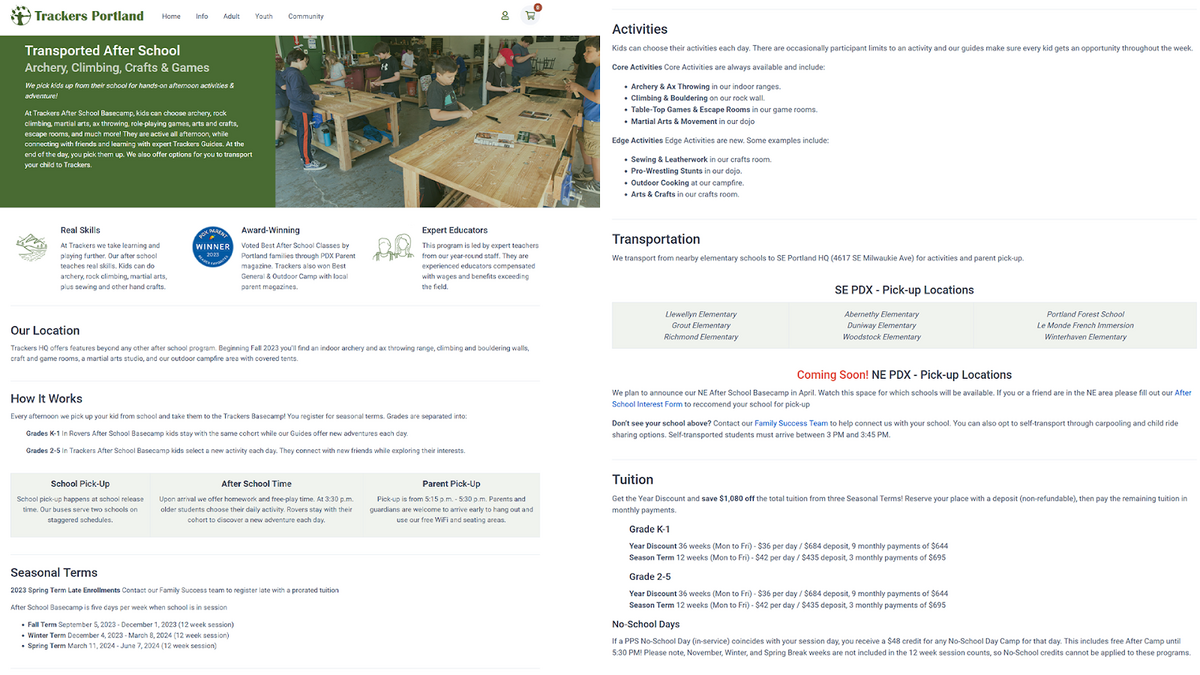
Source: Trackers After School Basecamp
Ultimately, a good service description is necessary for an after-school program business plan because it provides a clear plan of the program’s real-world application process.
Organizational Structure
The next section to include in your after-school program business plan is the organizational structure.
List out all the people involved or required to run the program. Begin with yourself.
Write your name and position in the program, then provide a short biography, listing relevant skills and a background check.
Do the same for the other team members. In case you don’t have any partners or employees yet, name and describe the positions you plan to fill with future candidates. Also, add your proposed salaries for each position and include them in your financial projections.
When applicable, highlight your or the staff’s experience compatible with your program, like in this example:
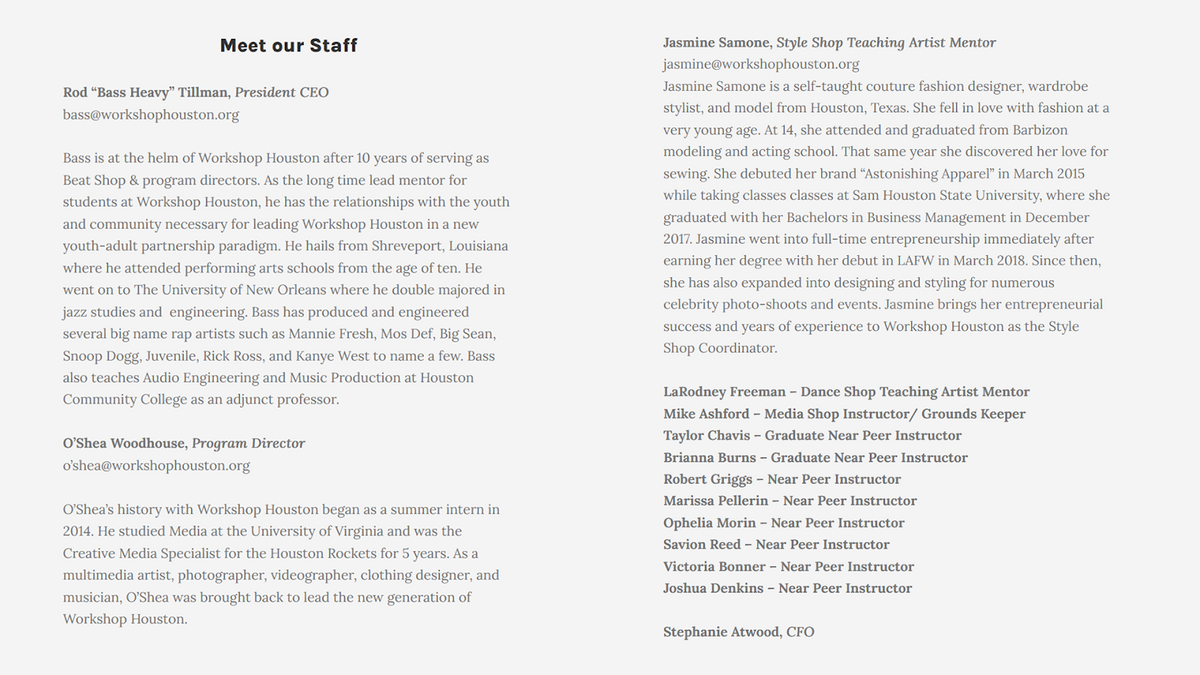
Source: Workshop Houston
Workshop Huston offers creative, artistic programs for their students, which is reflected here—the CEO is a musician, and the program director is a multimedia artist.
The involvement of experts gives the program stronger legs to stand on, making it more possible for an interested party to invest or enroll.
In summary, the organizational structure is an overview of the job positions that make up the inner workings of your after-school program, providing insight into the people who fill those positions and their skills.
Operations Plan
The operations plan is the logistical strategy for your after-school program, making it a key element to include in your business plan.
In it, describe in practical terms what your program’s day-to-day operations look like.
Specify what it takes to run the program in terms of finances and resources, and your plan on securing them.
In other words, explain your idea of how to manage the program for it to stay operational and achieve set goals.
The type of questions the operations plan needs to cover include:
- What is the weekly schedule?
- How many groups of students will there be?
- Which teacher will be running which group?
- What will be the staff-to-child ratio?
- Does the program require props or materials, and where will you get them?
- What does the registration process look like for students and parents?
- Will the program be for high school or middle school students?
Also, don’t forget to research city and state legal requirements for working with children. You can usually find it on your state’s government website.
Ensuring you have a compliant system in place will protect the children from potentially dangerous conditions and help you avoid fines or even closure.
In conclusion, an operations plan should be included in your business plan to explain how you intend to fulfill the various requirements of running your after-school program.
Market Analysis
This section of the business plan should provide an overview of the market conditions for your after-school program.
To begin, do in-depth research into the state of the industry and the competition.
Look into the number of programs on a local and national level and extrapolate any noticeable trends regarding growth in recent years. Are after-school programs on the rise or decline?
Find out how your city or state compares to the others in the number of programs to assess the need for one in your area.
If you’re unsure where to find the answers, the Afterschool Alliance offers a lot of useful resources to help you start:
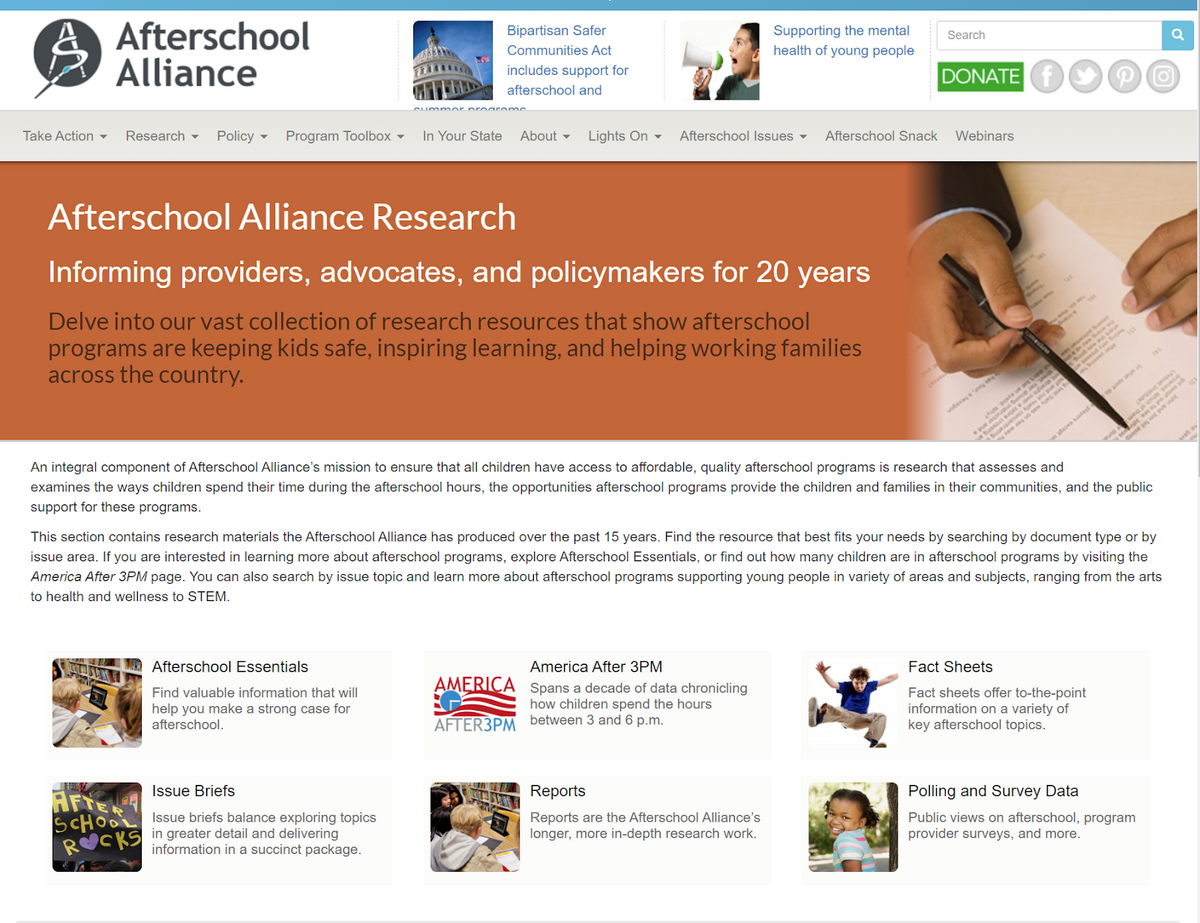
Source: The Afterschool Alliance
Find after-school programs in the vicinity and do a so-called SWOT (strengths, weaknesses, opportunities and threats) analysis. Do the same program evaluation for your own, and then compare the results.
To have a chance of succeeding, you have to stand out from your competitors by utilizing your strengths and compensating for your weaknesses.
Once you define the competition’s weak spots, you can carve out a place in the market by offering a better value for money, providing unique enrichment activities, or catering to a specific niche audience.
Overall, the market analysis should illustrate how your program plans to succeed in the context of direct competition and the industry as a whole.
Marketing Strategy
After an exhaustive analysis of the market conditions, your business plan should map out the marketing strategy for the after-school program.
Research different marketing channels to decide which one best fits your needs.
You can pass out flyers, take out ads in the paper, use social media advertising, or use legacy media to market your program. You should come to a decision based on your budget and the target audience.
There are many free and paid solutions that can help you efficiently spread the word, each with its upsides and downsides.
For example, a radio commercial on the local station during rush hour is expensive, but it could also reach many working parents in the area.
Social media is cheap and allows you to market to target audiences, but, depending on where you live, it’s possible that relatively few working adults use it.
All in all, your business plan needs a marketing strategy that can reach the most amount of people by using the limited resources available to the program.
Pricing Strategy
The pricing strategy for your after-school program is vital for its financial stability and eventual success in the real world.
The pricing strategy is firstly informed by market analysis.
For example, if comparable programs in your vicinity charge an average 100$ per week, you should either price gauge them or match their price, but stay in a 100$ ballpark.
If necessary, seek the advice of a financial expert who can carefully go over your projected costs and earnings and set a balanced price.
Next, you have to figure out how you will manage payments. Are you going to charge on a daily, weekly, or monthly basis?
When deciding on payment management, consider using a registration service like Regpack for your program.
Regpack offers an automated billing feature that is easy to set up and simple to use.

Source: Regpack
This is a practical solution that saves you time and energy in collecting payments.
In conclusion, the pricing strategy of an after-school program should outline how much you intend to charge for the service and your method of managing payments.
Financial Plan
In the last section of the business plan, you need to provide all the financial information regarding your after-school program.
Since you are just starting out, this data will be largely theoretical. However, mention the numbers you do have, such as your starting budget proposal, expenses, and any additional investments you have so far.
For the rest, use the financial estimations from previous sections to come up with projected earnings and expenses.
To approximate expenses, add up all the costs of running the program. These include the salaries, the rent for the location, the cost of marketing, and the price of materials you will need.
A simple way to calculate projected earnings is by multiplying the number of students by the monthly price of admission per student.
By juxtaposing earnings with expenses, you can make a better case for the sustainability or growth of your program.
To sum up, a financial plan should contain all the costs and expenses for operating an after-school program, and make reasonable goals and projections based on the numbers.
Conclusion
Your after-school program business plan provides detailed insight into your program services, operational strategies, business goals, funding sources, and finances.
It should include every piece of information that is pertinent to the program’s success in the market and the enrichment opportunities for the students.
The research you do will help you sharpen up your business strategy and convince others of your after-school program’s potential.
Therefore, whether you are looking for investors or just hammering out your plans, write a business plan that follows the route outlined in the article, and by the time you’re finished writing, you will have a stronger after-school program for your school district.



















